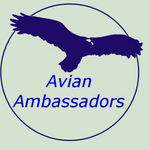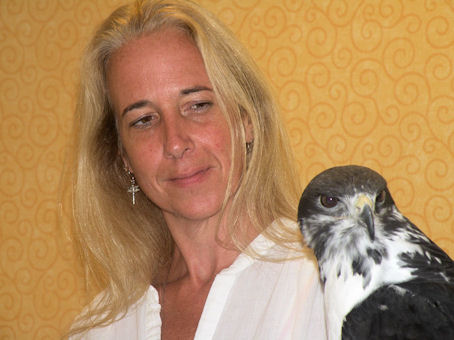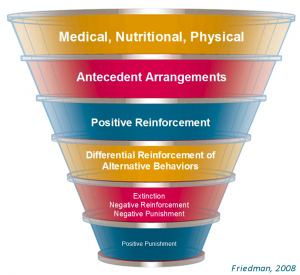The following was written as my “Letter from the President” in the current issue of the International Association of Avian Trainers and Educators Flyer member’s magazine. I received emails and even a phone call or two from my IAATE collegues who had found it useful and even inspirational. I believe it is worth publishing to the wider audience that reads my blog, I hope you also find it useful, informative, and maybe even inspirational … enjoy.
(First published in IAATE Flyer, Sumnmer 2010)
Recently my mind has been occupied with several training and behavior subjects. This has involved watching a little more closely not only how the subjects of the training session behave but also how their trainers behave in their interactions with other members of their team. Some of what I saw was perplexing and it took me on several thought paths and to more observation and reflection. The question that kept returning was, “if these folks are applying the current best techniques and getting good, sometimes excellent results with their animals, why are their teams and relationships with their colleagues in such disarray?”
Slowly I came to the conclusion that when interacting with colleagues and team members these otherwise gentle, least intrusive trainers were hooked on aversive stimuli in their management and leadership styles. “Attracted to aversive stimuli like a moth to a flame” was how it was summarized by Dr Susan Friedman in one of our recent conversations on this subject. The often used adage “setting them up to succeed” simply wasn’t present. I have to admit it came as a bit of a surprise that when dealing with the human members of their teams many people forget, or at least set aside, all the lessons they have learned so well for their animals.
During my reflections I spoke to several trainers on the receiving end of this aversive attention. There appear to be two extremes of leadership style; both fail their subjects in several areas. First there is the micromanager who seems incapable of allowing their team members to make a move without having almost complete hands-on themselves. What they are doing is taking all control away from their team members; the team has no power to make any decisions, anything they do is heavily criticized, leading to apathy and resentment. None of these effects should be a surprise to the trainer who understands behavior science.
At the other extreme is the leader who believes they are giving their team complete freedom by not interfering or supporting at all. While this approach can be not nearly as destructive as the micromanager it does bring its own problems, perhaps stronger this time for the leader. Things that are important to the team leader may not be performed, individuals begin to formulate their own priorities and focus on them, tension may develop between team members as they compete for their own agendas. Plus, the team leader often ends up just taking care of what needs to be done rather than directing the team and thereby creates a twelve-hour workday for them self.
Both of these situations can be avoided relatively easily especially for people with the skills that good animal trainers possess. Making the switch from the traditional training techniques for the animal collection was not easy. From their earliest years many, many people have become highly proficient in the use of punishment to gain control over others. Fortunately that is changing, at least for the animals; what is needed now is for the expansion of the ethical training techniques to be extended to encompass the whole team; to our colleagues, our supervisors, and the facility interns … everyone.
Apart from making the effort to keep the ratio of reinforcement to punishment as high as possible perhaps the most important aspect of being a good team member/leader is clear communication of expectations and responsibilities. Imagine the interaction with your colleagues like a play in which you are all actors. The play simply will not work unless everyone on the stage has the same script. Becoming angry because something was not done by a colleague when they were unaware that they were expected to do it just won’t help; be clear about expectations; be clear about responsibilities. Ensure that when the team decides what to do it is also clear about who will do it and by when. In a nutshell use one of the most powerful tools of empowerment, communication.
At a time when the forms of communication available to us are expanding almost exponentially it is vital to focus not on the volume of communication but the quality. Listen to what your teammates are saying, read their email carefully, think about and consider their motivation, their expectations … then respond.
Keep soaring,
Sid.
 Running from 9 am until 5 pm on Saturday and Sunday the class is an excellent opportunity for both beginning and experienced raptor presenters to learn the most contemporary, science based approaches to handling raptors for educational programs.In addition to basic raptor biology the workshop will cover equipment usage, handling techniques, and the science of behavior change.
Running from 9 am until 5 pm on Saturday and Sunday the class is an excellent opportunity for both beginning and experienced raptor presenters to learn the most contemporary, science based approaches to handling raptors for educational programs.In addition to basic raptor biology the workshop will cover equipment usage, handling techniques, and the science of behavior change.
 Our special guest presenter for the third year will be Robin Shewokis of the Leather Elves. Robin is a renowned enrichment consultant to zoos and the companion bird community. She will present a special workshop segment about enriching the lives of captive raptors.
Our special guest presenter for the third year will be Robin Shewokis of the Leather Elves. Robin is a renowned enrichment consultant to zoos and the companion bird community. She will present a special workshop segment about enriching the lives of captive raptors. avianambassadors
avianambassadors com?subject=8th%20Annual%20Raptor%20Handling%20Class
com?subject=8th%20Annual%20Raptor%20Handling%20Class




